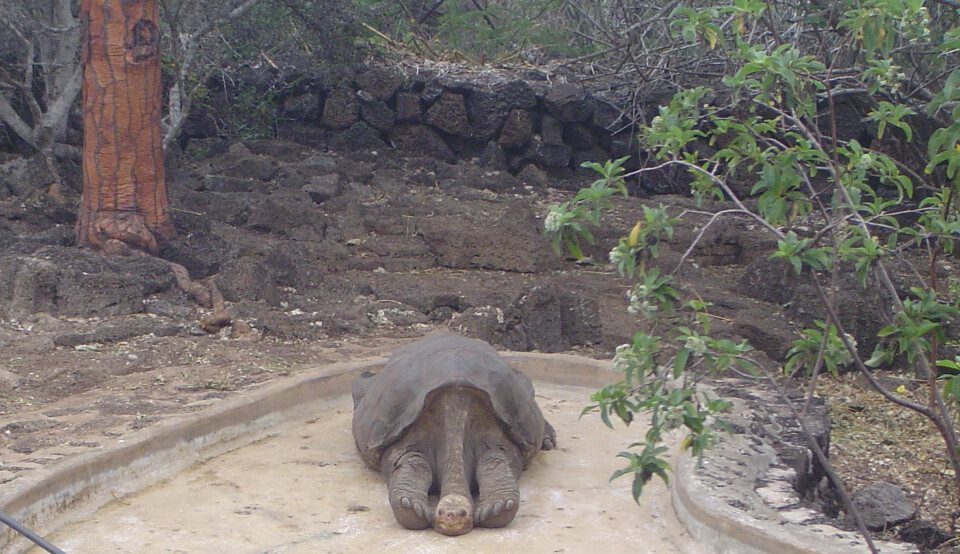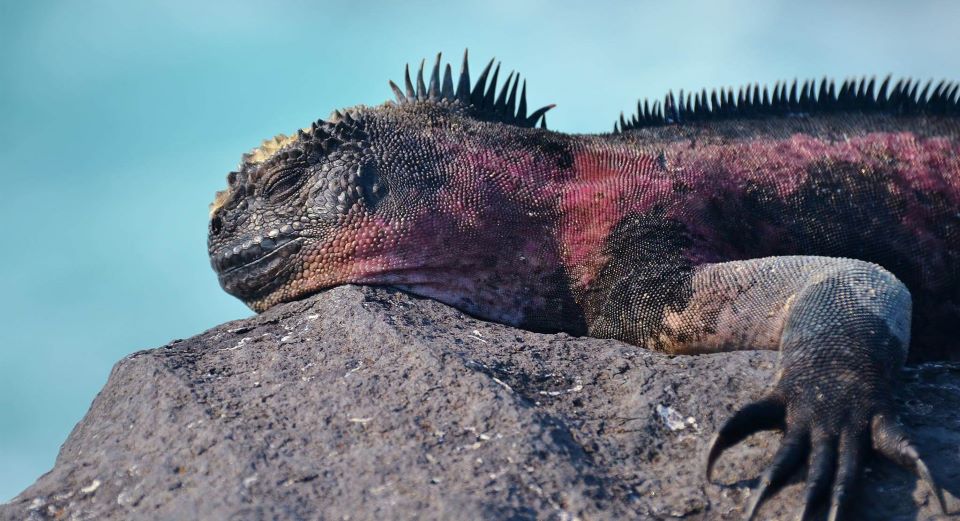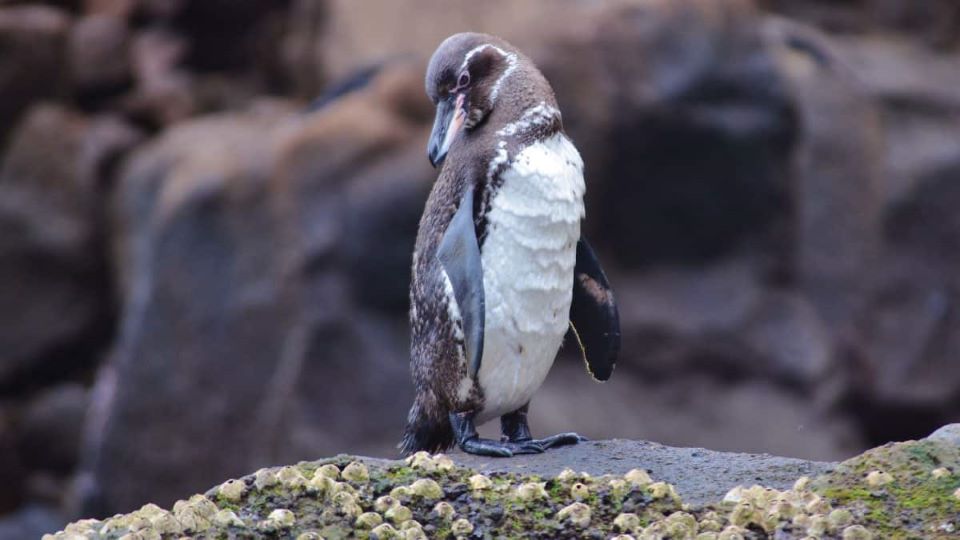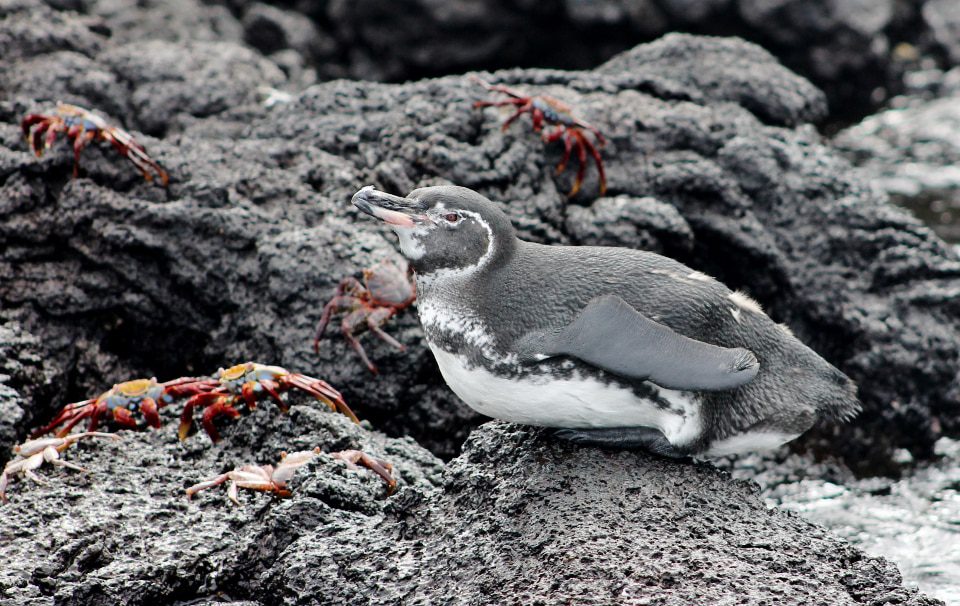Sometimes it seems like the more you learn about the Galapagos, the more unique these islands become. Yet another example of this is the strange and uneven representation of life that inhabits them. While the lion sits atop the food chain in the African savanna and the grizzly bear rules North America, the Galapagos giant tortoise, with its painfully slow plod and plant-crushing jaw claims the title for the largest animal in the Galapagos, while the 55-cm-long and 2 lb. Galapagos Hawk is the alpha predator. Learn about reptiles in Galapagos and life in the islands.

The rule of the reptiles in Galapagos
One of the first things visitors to the archipelago notice is the imbalance between the amount of reptiles in Galapagos and mammals that inhabit the islands. While there are 22 species of reptile and a whopping 56 native birds, there are just six land mammals in the Galapagos (four rat and two bat species) and absolutely no amphibians.
However, this flora and fauna imbalance is not uncommon among island populations, and there are two very simple explanations for it. Firstly, in geological terms the Galapagos Islands are quite young, species are still evolving and there are yet still more inhabitants to arrive. On the other hand, the imbalance is due to the islands’ isolation from any other land.

How did life get to the islands?
The Galapagos Islands formed from molten rock that poured out of the earth’s surface and built upwards until it peaked above the ocean surface, so the archipelago began as a volcanic wasteland. Furthermore, situated 600 miles from the closest landmass and never connected to the mainland, these islands are not particularly accessible.
TALK TO A DESTINATION EXPERT

Diego Zapata

Rosa Mena

Sandy Lara

Diego Zapata

Rosa Mena

Sandy Lara
Consequently, all life currently found in the islands at one point arrived via long-distance dispersal from either North, Central, or South America and the Caribbean. To make matters worse, the only form of transportation available was by water currents or wind currents, so the species that arrived to the islands had to be strong enough to survive weeks at sea without shade, fresh water or food.
Those Galapagos animals that are either strong swimmers or flyers, such as sea lions, sea turtles and sea birds most likely arrived to the archipelago thanks to their skill, strength and sheer willpower, dependent on their own bodies to propel them forward with the help of currents. Yet, even in this case the journey was not an easy one, and they were most likely caught up in ocean or wind currents during feeding or migration (ex. the Galapagos penguin).

Swept up in ocean currents
However, many of the animals that live in the Galapagos Islands could not have arrived by swimming, such as the iguana. It is generally accepted that these animals were swept from land on rafts of vegetation as a result of flooding, for example, and then caught up in ocean currents. It seems quite difficult to imagine that a raft of dead twigs and brush could travel the 600 miles from the Ecuadorian mainland to the Galapagos Islands, and indeed it is likely that the majority sunk before they arrived. Nevertheless, it would only have taken a few successful rafts to form the basis of the present day fauna population.
This raft theory perfectly explains the odd fauna imbalance in the Galapagos. The animals would have been exposed to extremely harsh, salty conditions with intense sun and wind exposure without any fresh water or food. Unlike reptiles in Galapagos, very few mammals could have withstood such conditions, and clearly the voyage would have been impossible for amphibians. In addition to their increased tolerance to sun and salt, reptiles in Galapagos can survive for small amounts of time with only limited nutrients.

Swept up in wind currents
On the other hand, the large number of plants and small insects that inhabit the islands most likely arrived by wind currents. This is the most probable scenario for lightweight spores and seeds (ex. ferns, mosses and lichens) or those designed for wind transport (ex. dandelions), and this theory also explains the lack of plants with heavy seeds in the archipelago, such as vascular plants. It is highly probable that small insects and weaker-flying land birds and bats could also have been transported this way. However, many organisms also arrived to the islands by birds caught in wind currents or stopping by the islands for a rest, which could have carried seeds and other organisms on their feet or feathers, or even released them through their digestive tract.
No matter how organisms first landed on the Galapagos Islands, it would have been a harrowing trip that an unfortunate amount didn’t survive. Nevertheless, in a certain light it adds to the wonder and beauty of the archipelago, which are the result of a series of chance and random processes that tested the true strength of nature.
Which reptiles will you be able to see on your Galapagos cruise itinerary?

Javier Garcia

Eduardo Silva

Carolina Escobar
START PLANNING YOUR TRIP

Javier Garcia

Eduardo Silva

Carolina Escobar
Get in touch for more
CONTACT US


